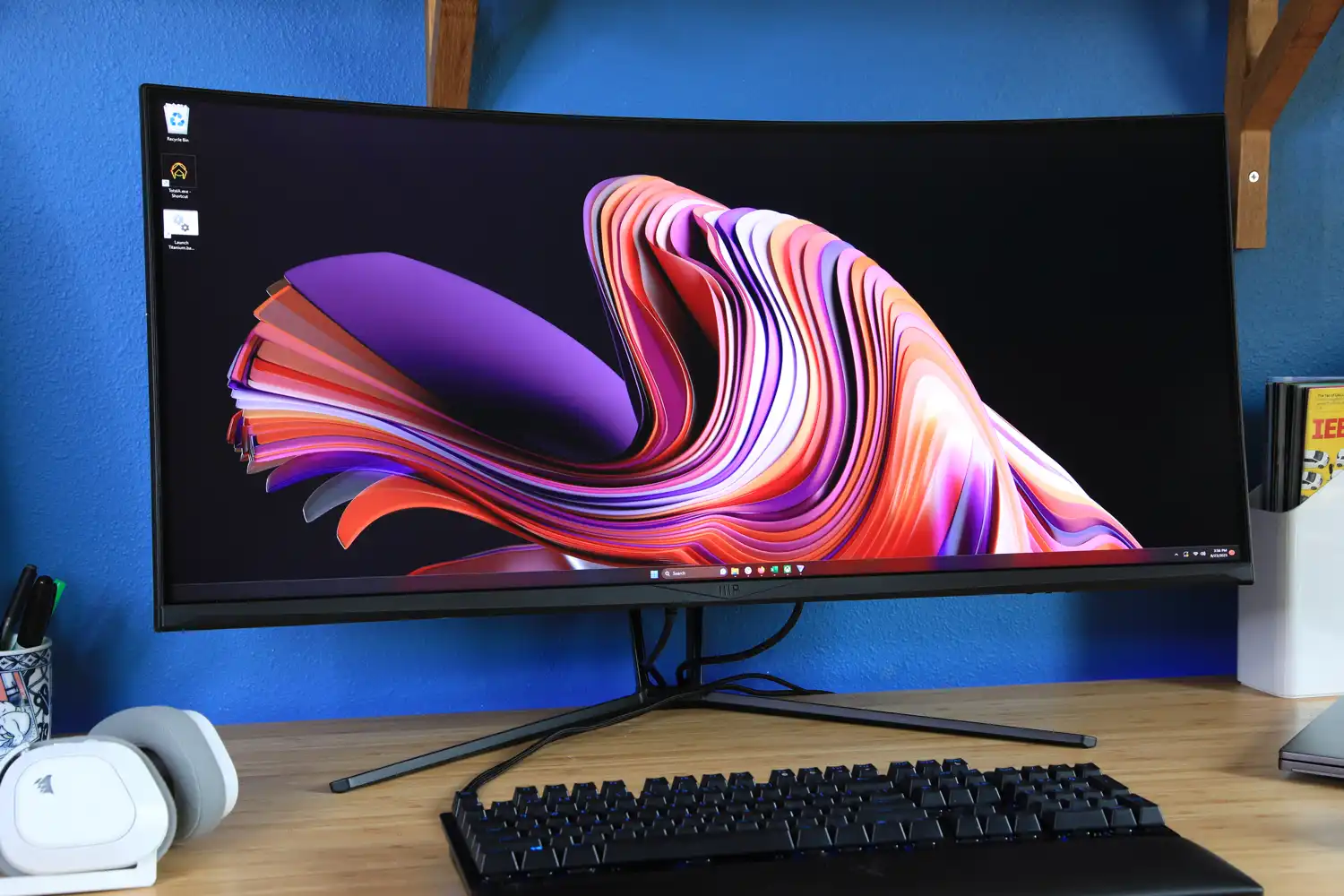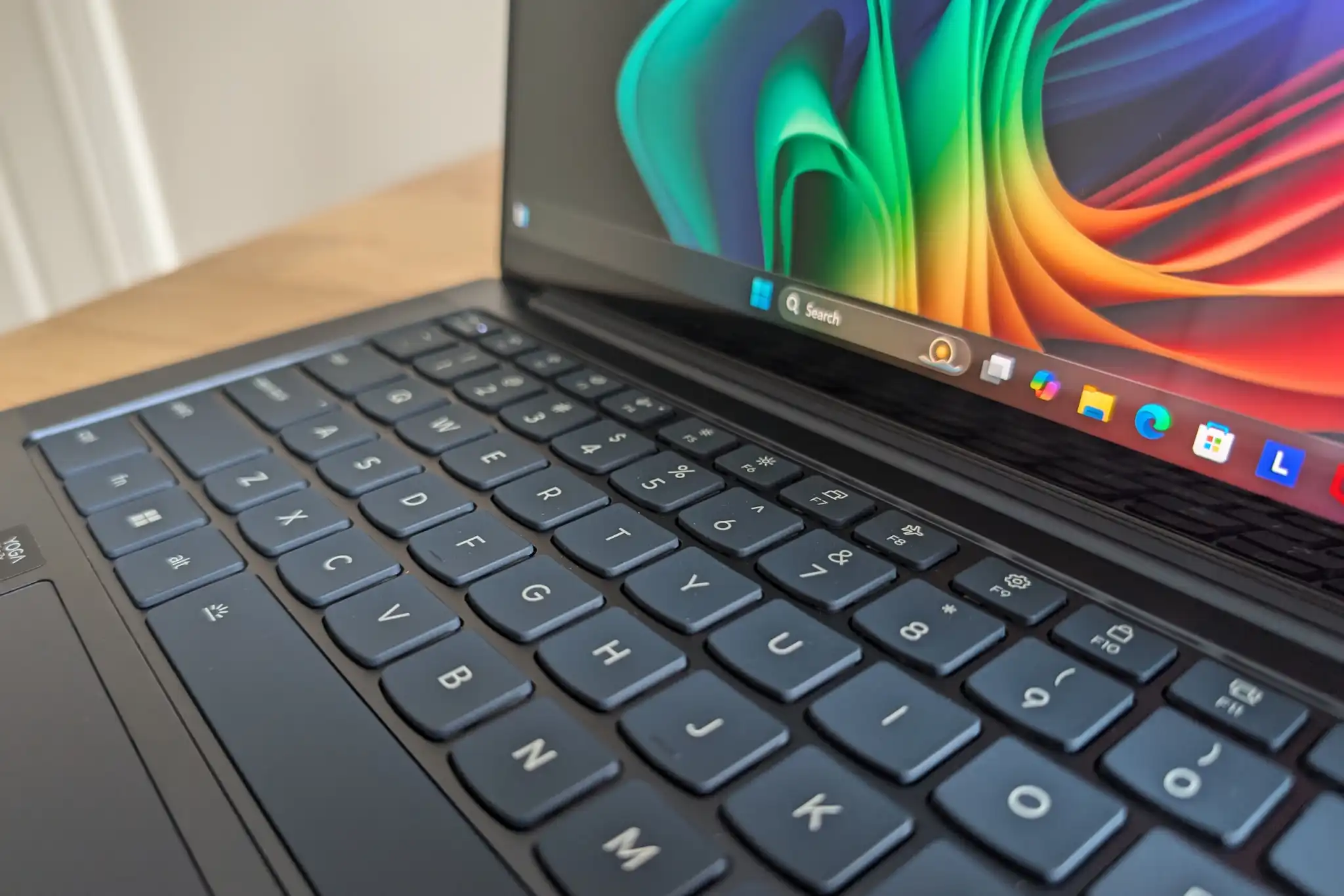A curved monitor is more comfortable for your eyes.
If you consider yourself a serious PC gamer, then you should consider picking up a curved monitor. Not only is the field of vision much higher, making it easier to see more of the game you’re playing, but you also don’t have to move your head as much. While curved monitors have a lot to offer hardcore gamers, they require more desk space and they’re not always the most budget-friendly peripheral.
Why you should buy a curved gaming monitor
You’re fully immersed
Alienware AW3423DW
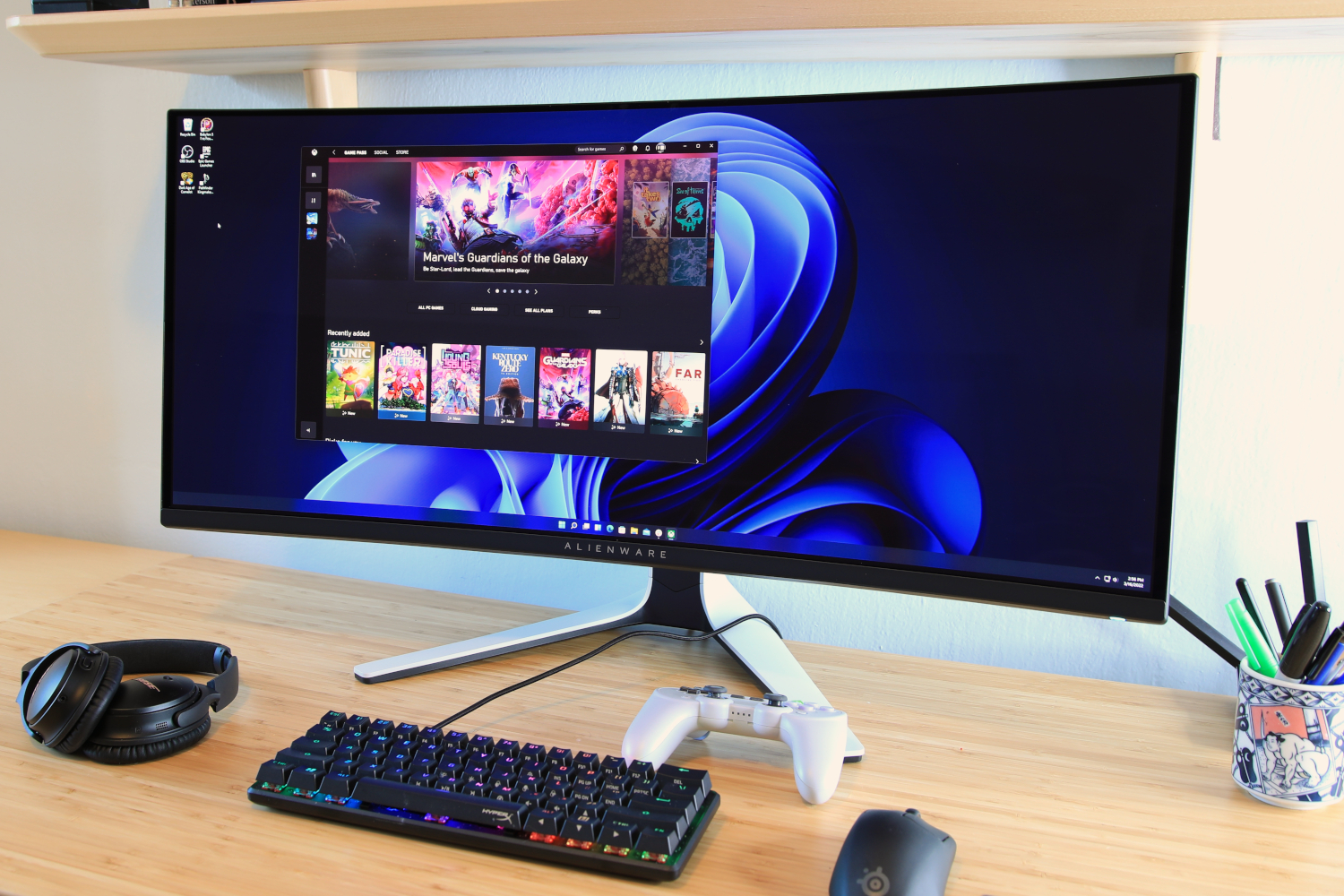
The main reason why most people buy a curved monitor is for the immersion factor. The curvature of the screen gives the illusion that the image in front of you is wrapping around you and making the gaming experience more immersive. This is more noticeable with ultrawide curved monitors, which have an aspect ratio of 21:9.
If you’re looking to buy this type of monitor, then you should check out PCWorld’s top pick for ultrawide monitors, the Alienware AW3423DW. It monitor delivers vivid images with deep black levels and bright highlights. It even offers a refresh rate of 165Hz as well as AMD FreeSync Premium Pro support.
Multitasking is much easier
You can do a lot with a giant screen. My dual-monitor setup, which I use for both work and gaming, massively boosts my productivity, as it allows me to multitask with ease. Whether I’m following along with a game guide or using my secondary screen for video calls, it definitely beats juggling a bunch of open tabs. Since many curved monitors have the 21:9 ultrawide aspect ratio, the wider field of view allows you to have various windows or apps open at once. You really get a ton of screen real estate with a curved monitor, which means it’s good for either work or gaming.
Monoprice 35in Zero-G Curved Ultrawide Gaming Monitor V2
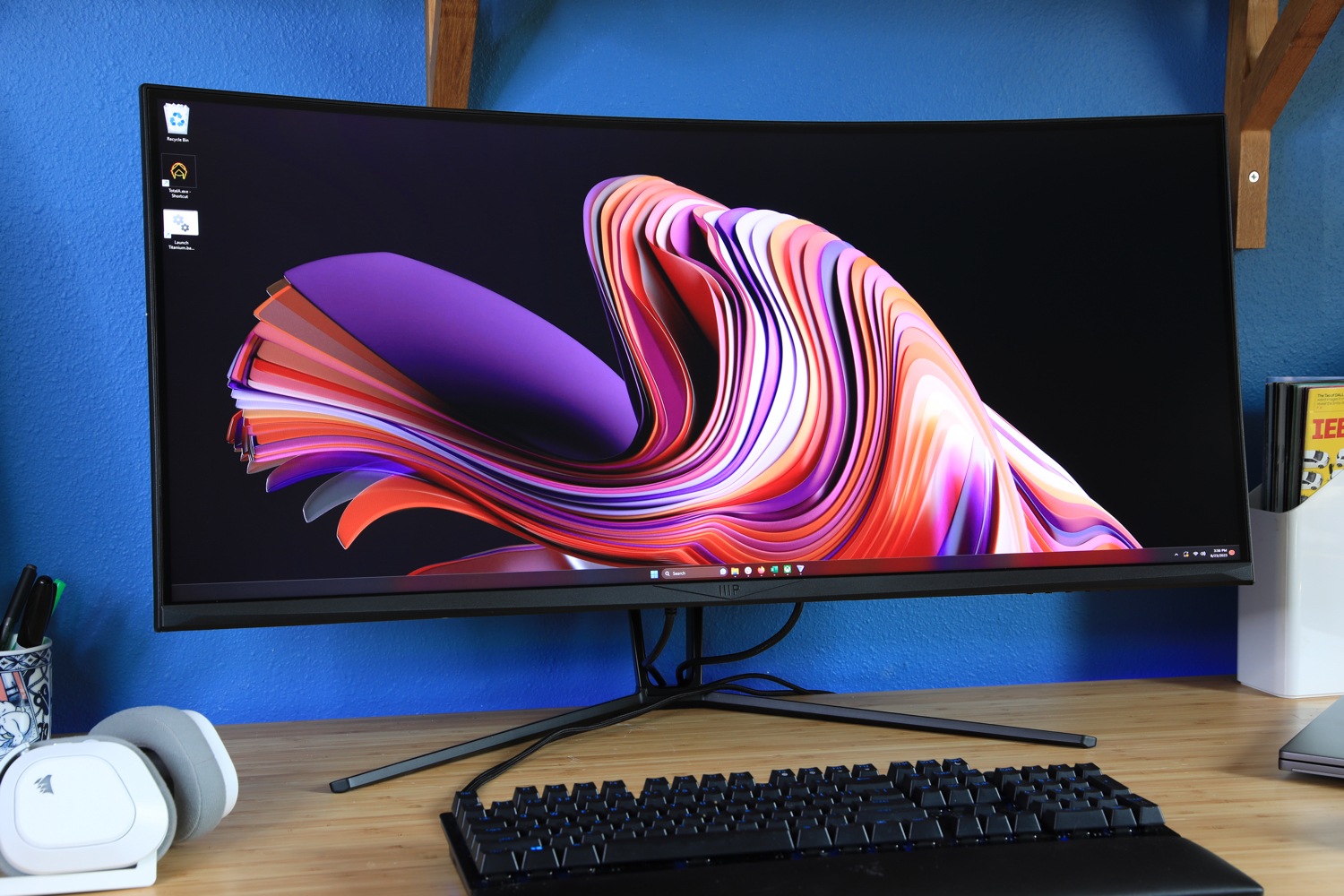
No distortion
Have you ever zoomed in on an image and it became fuzzy and misshapen? Well, on a curved monitor, you’re less likely to encounter distorted images. That’s because a curved monitor sends light directly at the viewer, resulting in a more uniform viewing experience. You should be able to see the image clearly from edge to edge. Flat monitors, on the other hand, send the image out in a straight line, which causes the image to appear more distorted, especially at the edges of the screen.
Decreased eye strain
The curvature of the screen matches the roundness of your eyeball, which mimics our natural field of view. With flat monitors (monitors without curvature), you have to try harder to refocus, as the center of the screen is closer to your eyes. That said, with curved monitors, you don’t have to move your eyes all the way across the screen. Your eyes will naturally focus on the center of the screen, which results in a more comfortable viewing experience. You won’t see much distortion on a curved monitor either, further reducing the likelihood of eye strain.
Why you shouldn’t buy a curved gaming monitor
No desk space
THE BEST BUDGET GAMING MONITOR HAS NO CURVE
Dell G2724D
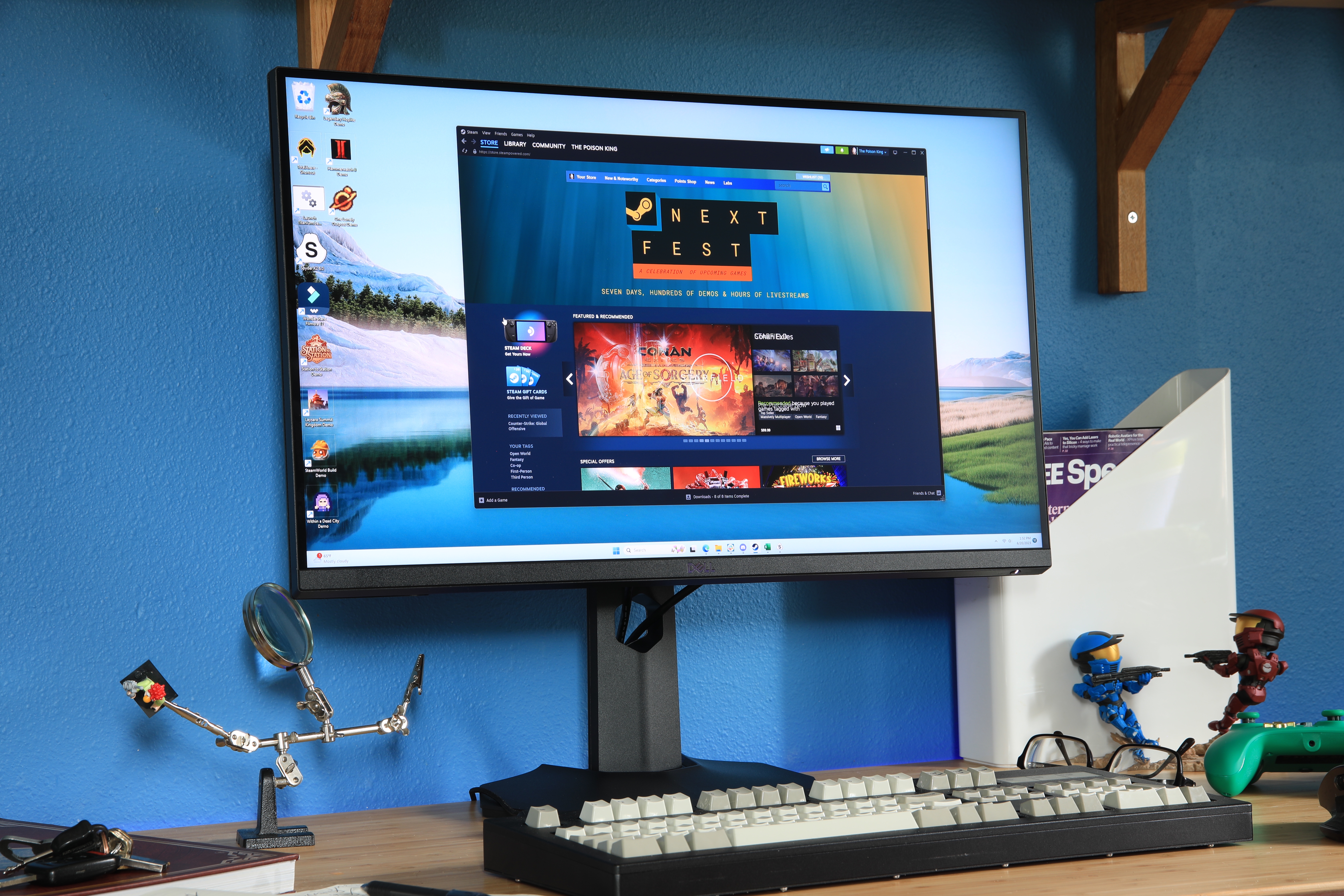
Curved monitors are bigger than their flat counterparts because of their wide aspect ratios, so they tend to occupy more desk space as a result. If you’re strapped for desk space, you may want to invest in a traditional flat monitor. The Dell G2724D, for example, is PCWorld’s best budget gaming monitor. This 27-inch, 1440p flat monitor is a good option for smaller desks because it has a smaller physical footprint. It also has a high refresh rate of 165Hz, which means you can expect solid motion clarity and fluid gameplay.
Expensive
Generally speaking, curved monitors tend to be more expensive than flat monitors. This is due to them having longer screens (it needs the length to curl at the ends), their pixel-packed pictures, and the involved manufacturing process. That said, there are a few exceptions out there in the world. The Gigabyte GS34WQC, which is PCWorld’s best budget pick on our best ultrawide monitors roundup, is on sale at Best Buy for just $299.99 at the time of this writing. That’s a pretty darned good price for a curved monitor with a fast refresh rate (up to 144Hz) and solid color performance. Many higher-end curved monitors can cost anywhere from $600 to $1,000.
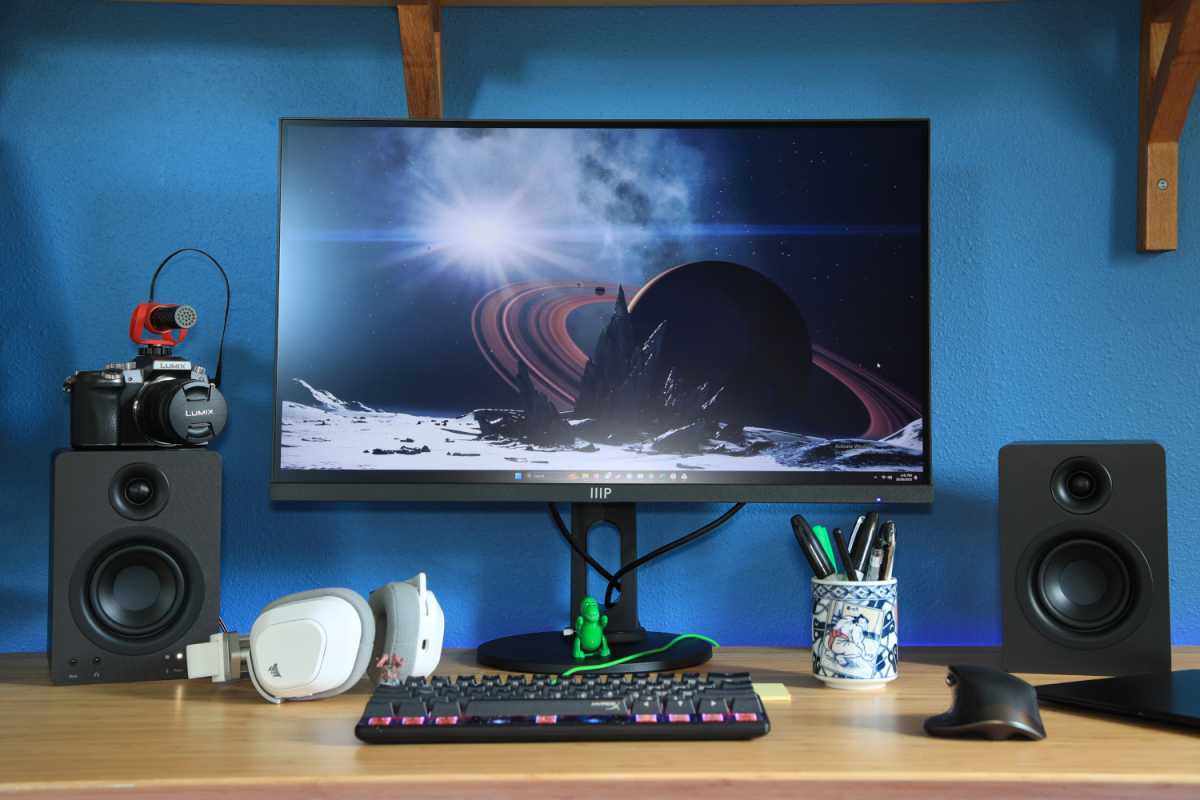
Matt Smith
FAQ
What’s a curved monitor?
A curved monitor is a monitor with… a curve in it! They’re generally used as gaming monitors because they’re more immersive than the flat variety. It’s a more comfortable viewing experience too, as it allows our eyes to take in the whole picture.
What are curvature ratings?
When you’re shopping for a curved monitor, you’ll notice they’ll have ratings like 1800R and 4000R. The number is the radius in millimeters and the letter R stands for radius. The lower the rating, the more drastic the curve will be. So, for example, a monitor with a 4000R rating has a radius of 4000mm or four meters.
Are curved monitors better than flat monitors?
That depends on what you’re looking to get out of your monitor. If you’re really into immersive gaming, a curved monitor might be the best choice. Curved monitors also match the curvature of our eyes, which makes for a more comfortable viewing experience. If you’re on a tight budget or don’t have a lot of desk space, flat monitors are the way to go, as they’re more affordable and come in smaller sizes.

